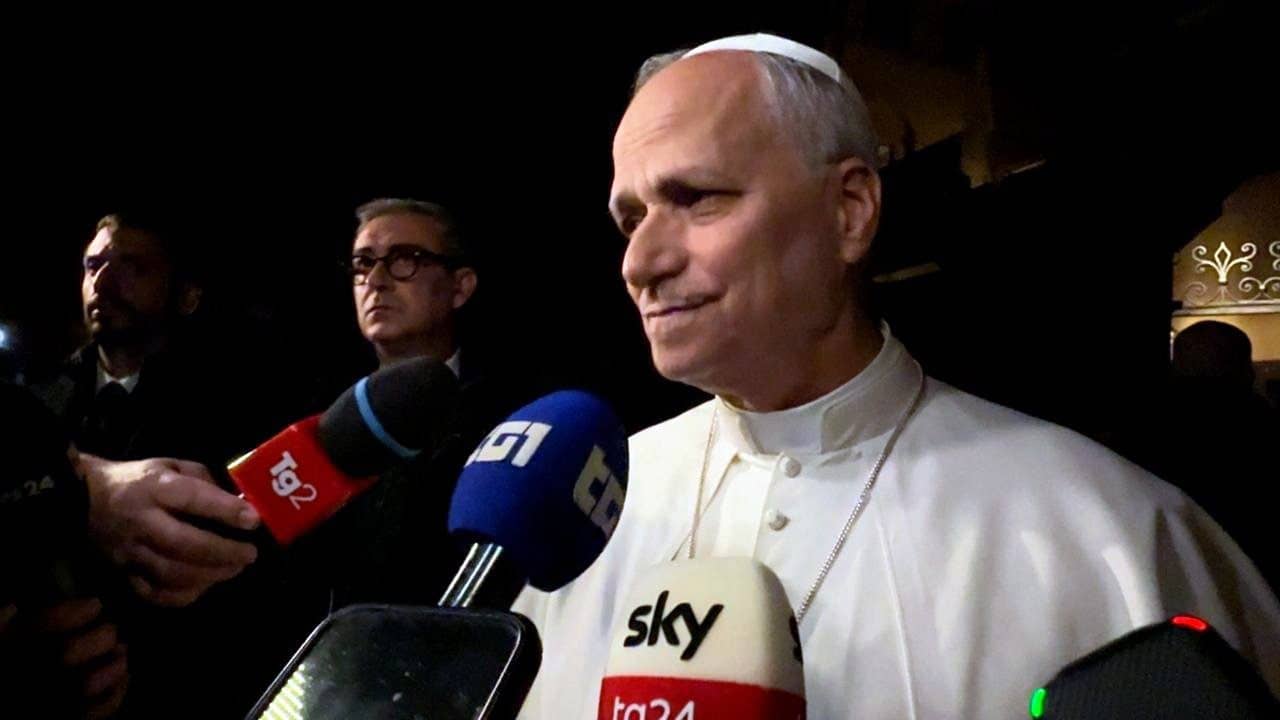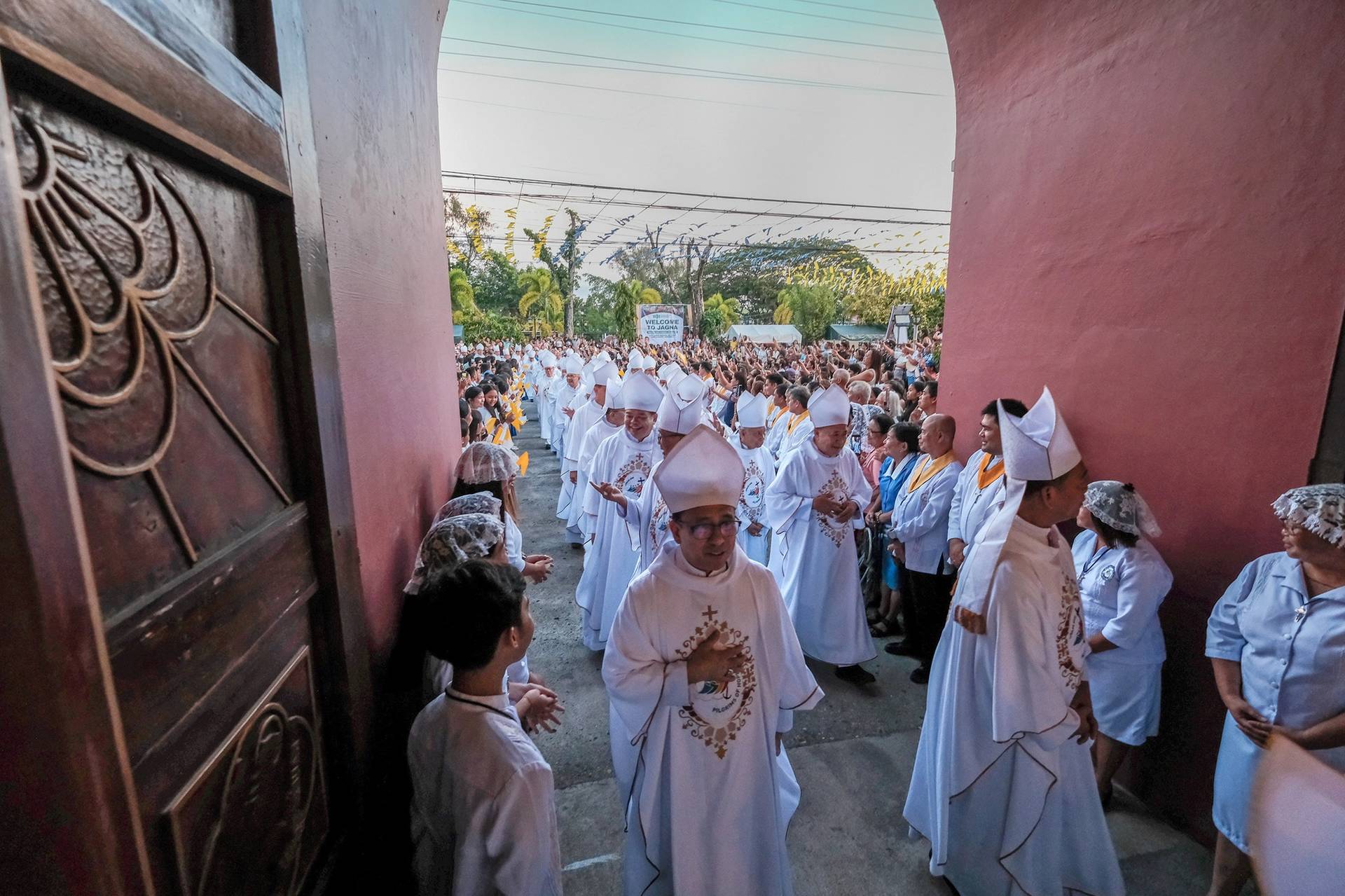In a recent letter to The New York Times, Marquette theologian Daniel Maguire suggested that the Catholic Church was headed toward a three-way schism.
Writing about Pope Francis’ reforms to the annulment process, Maguire predicted:
Catholicism is going the way of its parent, Judaism. In Judaism there are Reform as well as Conservative and Orthodox communities. This arrangement is not yet formalized in Catholicism, but the outlines of a similar broadening are in place …. While conservative and orthodox Catholics welcome this annulment concession by the Vatican, reform Catholics don’t need it. Their consciences are their Vatican. Reform Catholics, whose numbers are swelling, are still bonded to the church but not to the Roman curia.
It is certainly possible to discern three tribes within American Catholicism. However, using the Jewish terminology is confusing. “Orthodox,” “Conservative,” and “Reform” do not translate well into American Catholicism. Clearer titles for the three tribes might be “Traditionalist” which correlates with the Jewish “Orthodox.” “Magisterial” because “conservative” Catholics adhere to papal teachings and the magisterium, while “Progressive” reflects the “Reformed” group in Judaism.
Three in One and One in Three
What marks these three tribes? Let’s be positive and say what each group is for rather than what they’re against.
Broadly speaking, “Traditionalists” adhere to the Extraordinary Form of the Mass, the Baltimore Catechism, and Church teachings from before the Second Vatican Council. They are positively pro-life, they support traditional family structures, and encourage fine music, beautiful liturgy, art, and architecture. They are in favor of celibacy for an all-male priesthood, a renewal of the enclosed religious life, and support a wide range of traditional devotions.
“Magisterial” Catholics put loyalty to the authority of the pope and magisterial teaching first and foremost. They are happy with the principles of the Second Vatican Council, but want to “Reform the Reform.” They want to celebrate the Novus Ordo Mass with solemnity, reverence, and fine music. “Magisterial” Catholics are likely to be enthusiastic about apologetics, evangelization, and a range of pro-life ministries. They think the Church needs to relate to the modern world, use new media, and connect with the younger generation, but they look to the pope and Church teachings to help them do that faithfully. They uphold traditional Catholic teaching in faith and morals, but wish to communicate and live these truths in an up-to-date and relevant way. George Weigel dubbed them “Evangelical Catholics.”
The “Progressives” are vitally interested in peace and justice issues. They’re enthusiastic about serving the marginalized and working for institutional change. They are likely to embrace freer forms of worship, dabble in alternative spiritualities, and be eager to make the Catholic faith relevant and practical. Progressives believe the Church should adapt to the modern age. They are sensitive to ecumenical and “pastoral” needs and are likely to see Catholic doctrines and moral precepts as “guidelines” that need to be used flexibly depending on the individual and his circumstances. Maguire sums up their attitude pretty well: Progressives “don’t need the Vatican. Their conscience is their Vatican.”
I agree with Maguire that these three tribes can be discerned within American Catholicism. Where I disagree is that there can be any formalized arrangement that establishes three separate groups. The three groups exist within the Catholic Church in an uneasy alliance, and that’s how it has to stay. I’m surprised that a theologian of Maguire’s standing seems unfamiliar with the term “schism,” because any group that separates from the Catholic Church would cease to be Catholic — even if they called themselves Catholic.
Maguire envisions three different “Catholic” groups emerging as separate entities, but why just three? In fact, a plethora of groups have already parted ways with the Catholic Church, and set up shop as “independent Catholic Churches.” A quick rummage through the Web reveals a fascinating set of alternative Catholic denominations who (to use Maguire’s phrase) “don’t need the Vatican. Their conscience is their Vatican.”
They comprise an intriguing collection of eccentric characters who live in a churchy fantasy land of their own making. Self-appointed bishops, archbishops, patriarchs, eparchs, and popes, they are both ultra-traditionalist and ultra-progressive. They live in the basement of Mother Church like a twenty-something who dwells in his mother’s basement, plays video games, and dreams about being a football hero. Exploring their alternative world is like a visit to an ecclesiastical Believe it Or Not museum.
The Traditionalists
The jury is still out as to whether the Society of St. Pius X is formally in schism, but as traditionalists who reject the Novus Ordo Mass and the authority of the Second Vatican Council, they’re high on the list. Nevertheless, their leaders continue to flirt with Vatican authorities and recently Pope Francis granted their priests faculties to hear confessions, so rapprochement is possible.
Schismatic traditionalists fall into two main groups. The sedevacantists (the See is vacant) who believe there is no longer a valid pope, and the conclavists who have gone one step further and elected their own pope. The Society of St Pius V, a sedevacantist group based in New York, is steered by Bishop Joseph Santay, while the Traditional Roman Catholic Church, founded by His Lordship Sherman R. Pius Mosly, is based in New Jersey. Another sedevacantist group is The Congregation of Mary Immaculate Queen. Founded by Francis Konrad Schuckardt (d. 2006), they are dedicated to the messages of Fatima and are part of Schuckardt’s Tridentine Latin Rite Catholic Church.
Conclavists are distinguished by having their own pope. The Palmarian Catholic Church is a notable conclavist group from Spain where they follow Pope Gregory XVIII. Noteworthy American anti-popes are Pope Michael, who lives with his parents in Kansas; the Rev. Lucian Pulvermacher, known as Pope Pius XIII (d. 2009), and a former Episcopal priest, Chester Olszewski of Pennsylvania, who reigns as Pope Peter II. South African Victor Von Pentz (Pope Linus II) lives in Hertfordshire, England, while Argentinian Alejandro Tomás Greico is Pope Alexander IX. Around the world, there are about a dozen other papal claimants whose “conscience is their Vatican,” including convicted sex offender William Kamm, whose papal apartment is a jail cell in Germany.
Among the traditionally minded, there are also some intriguing groups that overlap with other Catholic-minded traditions. They often have curious histories that meld not only Catholicism and Anglicanism, but also link with Eastern Orthodoxy, Syrian, Coptic, and Celtic Christianity. A good example is the group recently established by His Eminence, Rutherford Cardinal Johnson, Patriarch of The Anglican Rite Roman Catholic Church. His Eminence claims that the ARRCC is rooted in the Catholicism of 16th-century Tuscany and the ancient English Catholic rite. The Church of the Culdees, led by the Most Rev. Ivan MacKillop, OCC, celebrates medieval Anglo-Irish Monasticism, while The Celtic Orthodox Church has revived the ancient Coptic-Celtic traditions of Brittany, Ireland, and Western Britain.
The Progressives
Not enthusiastic about popes at the best of times, Catholic progressives don’t consecrate their own anti-popes, but they do boast more than 20 “Independent Catholic Churches” with their own bishops and archbishops. Not counting the Eastern Orthodox and more than 100 independent Anglican denominations, the progressive schisms are made up of Independent Catholics, Old Catholics, and Alternative Catholics. Like the traditionalist groups, most of them claim apostolic succession from the Old Catholic Church of Utrecht — which was established in the 1870s in disagreement over the definition of papal infallibility.
Typical examples of progressive Catholic groups are The Reformed Catholic Church and the Worldwide Ecumenical Catholic Church of Christ with Archbishop Karl Rodig. Then there is the Ecumenical Catholic Church, not forgetting the Ecumenical Catholic Communion and The American National Catholic Church. Most of the progressive groups endorse remarriage after divorce, women’s ordination, married clergy, same sex unions, and contraception. Some exclude women priests, but those Catholics whose “conscience is their Vatican” can affirm women’s ordination by joining The Association of Roman Catholic Women Priests.
Among the more unusual progressive schisms are The Antiochian Church in America, a little church in Tennessee with a taste for Eastern Orthodoxy; the Imani Temple African-American Catholic Congregation founded in 1989 by former priest George Augustus Stalling Jr., and The Traditionalist Mexican-American Catholic Church known for their veneration of Sante Muerte and drug trafficking. Their current archbishop, David Romo Guillén, is serving a 66-year jail sentence for kidnapping and money laundering.
While some progressive Catholics find a home in the “Independent Catholic Churches,” more find their way to the the mainstream liturgical Protestant churches. With the same progressive agenda, and a stronger infrastructure, the Episcopal, Lutheran, and Methodist churches also offer a Catholic atmosphere for Catholics who are bonded to the Church, but not to the Roman Curia.
Cafeteria Catholics?
Some might suggest that Catholics whose “conscience is their Vatican” stop being hypocrites, follow their conscience, and join one of the many groups with whom they are in agreement. If a progressive Catholic wants married priests, New Age spirituality, women’s ordination, artificial contraception, same-sex marriage, and abortion, wouldn’t they be happier with Christians with whom they agree?
Likewise, if a traditionalist Catholic finds himself continually worked up because Pope Francis is too leftist, the new Mass is too informal, and he is dismayed by what he perceives as the hypocrisy of “liberal” Catholics, spineless bishops, poor catechesis, lax clergy, and heretical leadership, shouldn’t he let his “conscience be his Vatican” and either scoot off to join one of the traditionalist schisms or start his own?
The answer is “no.”
The Catholic Church needs diversity of opinion. It’s healthy for family members to disagree, and debate is one of the ways the Holy Spirit leads the Church. But both progressives and traditionalists must constantly measure their personal opinions and preferences against the magisterium of the Church and her authority.
Discontented progressives and traditionalists should not march off in a huff and join a schism. Instead, both sides should remember the definitions of difficulties, doubt, and dissent. A difficulty is when we honestly face a problem with the faith, scratch our heads, and wonder, “How can that be?” A doubt is when we nurse an attitude of rejection and rebellion, saying, “That can’t be!” Dissent is when we act on our doubt and openly disagree with, dismiss, and disobey Church teachings without regret or repentance.
The answer for cafeteria Catholics is not to leave the Church. Instead, the answer is for those with difficulties to work through them, for those with doubts to develop a curious and affirming attitude to Church teaching, and for those who dissent to pray for a change in their hearts and minds so they might come at last to the place where they can joyfully assent to the fullness of the Catholic faith.














